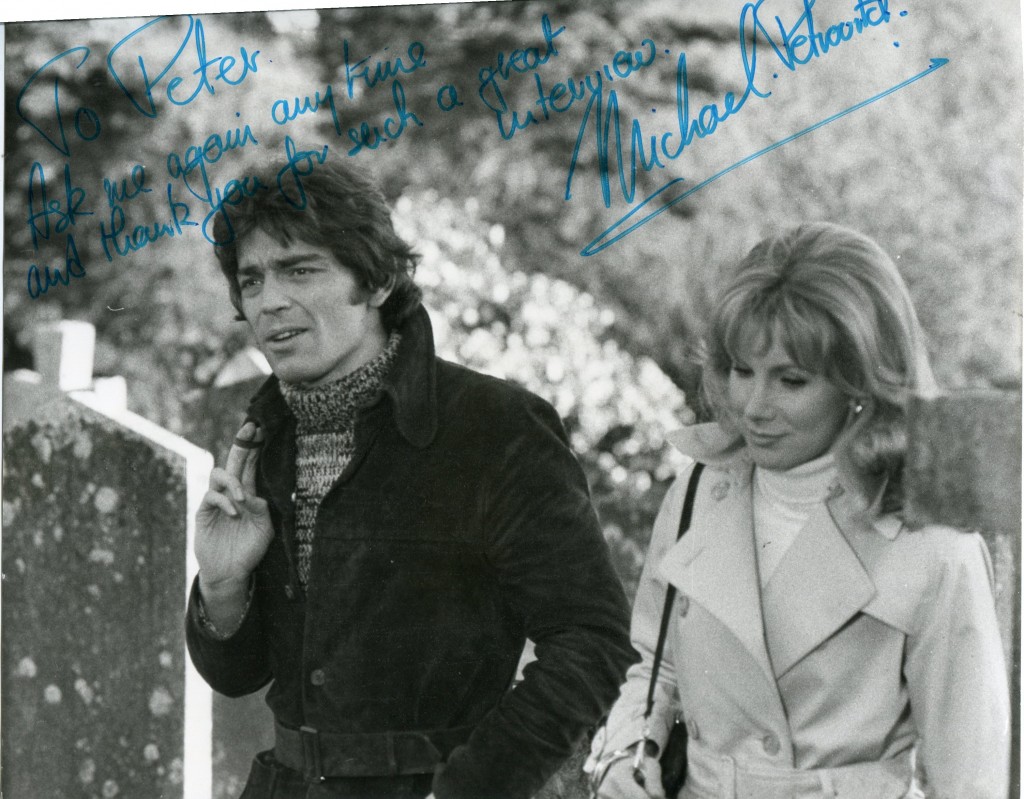
Marianne Stone’s list of film credits must be the longest of any actor in British film. At one time she seemed to pop up in every film made in the UK between the late 1940’s and the late 1980’s. She played minor roles but they were always choice and she could do a lot in a few minutes. She usually played charladies, office typists, waitresses, clerks in the civil service, bar ladies and often appeared in crowd secenes where she would stand out with a few words. Her films include “Brighton Rock” in 1947, “The Clouded Yellow”, “The Good Die Young” and several Carry On’s. She retired in 1989 and died in 2010 at the age of 87. She was the widow of the show business writer Peter Noble.
Tom Vallance’s obituary on Marianne Stone in “The Independent”:
The accomplished character actress Marianne Stone had the distinction of being the most prolific actress in the UK, appearing in over 200 films, an achievement that earned her a place in the latest Guinness Book of World Records as “the actress with the most screen credits”. She has also been hailed in the book English Gothic: A Century of Horror Cinema for her contribution to the horror movies that flourished in the Sixties, but most of her screen roles were as working-class characters. In two of her earliest films she was respectively a shop assistant in When the Bough Breaks (1947), and a sluggish waitress in Brighton Rock (1947).
Though she occasionally had lines to speak, many of her roles were wordless and uncredited, but she had some pithy roles in the Carry On films (nine of them) and she had a small, but striking, role in Lolita (1962), directed by her friend Stanley Kubrick and adapted from the controversial novel by Vladimir Nabokov. Stone played Vivian Darkbloom (an anagram of the author’s name), a mysterious lady who is seen dancing with the jaded writer Clare Quilty, played by Peter Sellers. (In the 2001 fantasy Donnie Darko, Maggie Gyllenhaal attends a fancy dress Halloween party as “Vivian Darkbloom”, Stone’s character.) For 50 years Stone was the wife of the film and theatre reporter, gossip columnist and bon vivant Peter Noble, and the parties they used to give at their rambling house in Abbey Road were legendary.
She was born Mary Stone in London in 1922, and won a scholarship to the Royal Academy of Dramatic Art, where she became friends with fellow student Richard Attenborough. From 1943 to 1945 she was part of the company performing at the Intimate Theatre in Palmers Green, where she won particular accolades for her performance as the cunning Cockney trollop Betty Watty in Emlyn Williams’ The Corn is Green. Noble was a young journalist who covered the Intimate’s productions for a local paper, and Stone began to notice that he always gave her favourable reviews, even when her part was minuscule. They began going out together, often joining the Attenboroughs at the Arts Theatre Club, and in 1947 they were wed. They had two daughters, Kara and Katrina, and the marriage lasted until Noble’s death in 1997.
In 1946 Stone appeared at the St James Theatre in two alternating plays in repertory produced by the actor-manager John Clements: John Dryden’s Marriage à la Mode (in which Moira Lister and Stone played sisters) and the premiere of Margaret Luce’s The Kingmaker, a biography of Richard Neville, Earl of Warwick, the key protagonist in the Wars of the Roses. Stone then played Betty Watty again when The Corn is Green was staged at the New Theatre, Bromley, where the actor playing the young miner who is given the chance of a university education was played by the then little-known Bryan Forbes.
Throughout these years she was billed as Mary Stone, but as her career in films got underway she changed her first name to Marianne, though her friends still knew her as Mary Noble.
She made her screen debut in the Arthur Askey musical comedy Miss London Ltd. (1943) and her early roles included a factory girl in Miss Pilgrim’s Progress (1950), a “woman in a phone box” in the apocalyptic drama Seven Days to Noon (1950), and in 1954 she played barmaids in three films, You Know What Sailors Are, The Good Die Young and The Gay Dog. Her first foray into the Carry On franchise was in Carry on Nurse (1959), and her flair for comedy was particularly apparent in Carry On at Your Convenience (1971). She was typically a “woman in a scarf” in The Jokers (1967), and in Oh, What a Lovely War (1969), directed by Richard Attenborough, she was a mill girl. Her finest opportunity to display her prowess was probably as Lena Van Broecken in three episodes of the BBC television series Secret Army (1977/8). Her last film appearance was in the gothic tale set in the world of ballet, Deja Vu (1985).
At the parties she and Noble gave, it was quite likely that one would run into top stars, in London to make or promote a film, to appear on stage or just to visit. The Kubricks were good friends, and the family have three paintings by Christiane Kubrick that she gave to the Nobles. One of their regular guests remembers meeting Lana Turner and Sean Connery (the latter not yet a major star), who were filming Another Time, Another Place, and stars who could always be found at the Abbey Road dwelling when in town included such illustrious names as Elizabeth Taylor, Joan Crawford, Roger Moore, Shelley Winters, Paul McCartney and Herbert Lom, who was the best man at their wedding.
Stone is survived by her two daughters and a grandson, Nicholas Frew.
……… Tom Vallance
“The Independent” obituary can also be accessed online here.











































































